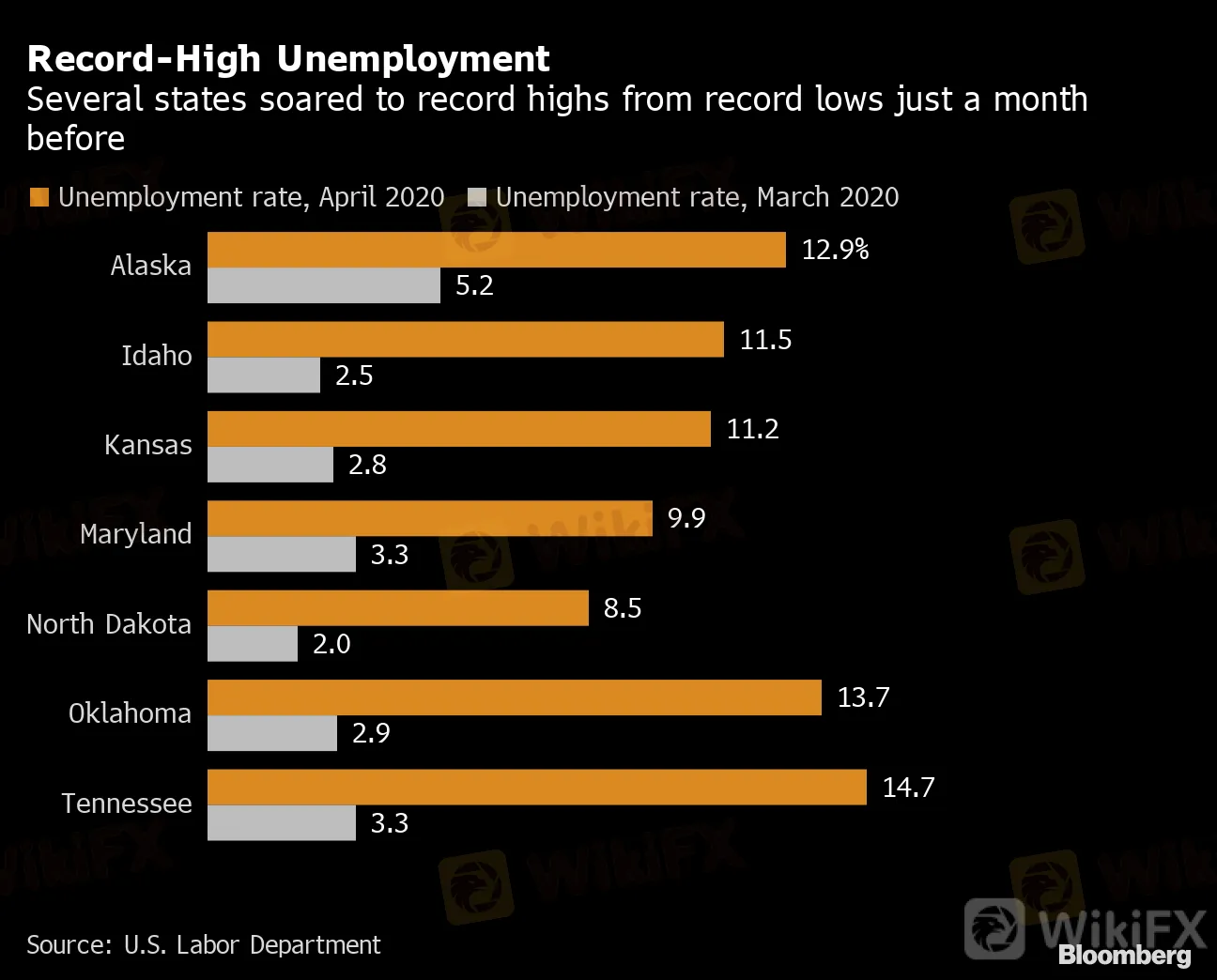简体中文
繁體中文
English
Pусский
日本語
ภาษาไทย
Tiếng Việt
Bahasa Indonesia
Español
हिन्दी
Filippiiniläinen
Français
Deutsch
Português
Türkçe
한국어
العربية
Michigan Led U.S. With Biggest Percentage Drop in April Payrolls
Abstract:The coronavirus pandemic ripped through the economy with frightening speed, spurring job losses in every U.S. state in April. The largest deterioration in the labor market occurred in Michigan, Vermont and New York.
The coronavirus pandemic ripped through the economy with frightening speed, spurring job losses in every U.S. state in April. The largest deterioration in the labor market occurred in Michigan, Vermont and New York.
In Michigan, payrolls plummeted 22.8%, or a little more than 1 million, from the prior month to 3.4 million, according to Labor Department report Friday. Vermont, with a much smaller population, registered a 19.6% decline, while employment in New York slumped 18.8%.
Meanwhile, unemployment rates in 43 states were the highest in records back to 1976. The jobless rates in Nevada and Hawaii exceeded their previous records by more than 10 percentage points each. Unemployment in Nevada jumped 21.3 percentage points to 28.2%, while Hawaiis climbed 19.9 points to 22.3%. Michigan posted the third-largest increase -- an 18.4 point rise to 22.7%.
The state data offer a more granular look at the 20.5 million job losses seen across the nation in April -- 10 times the previous record decline, according to the Labor Departments monthly jobs report. The unemployment rate jumped to 14.7%, the highest in government records dating back to the 1940s.
Record-High Unemployment
Several states soared to record highs from record lows just a month before
Source: U.S. Labor Department

While the job losses in Oklahoma, Arkansas and Wyoming and still numbered in the thousands, those states saw the slowest paces of deterioration in payrolls. Employment dropped by around 8% in those states from a month earlier. Meanwhile, jobless rates remained in single digits in just eight states, with Connecticut registering the lowest at 7.9%.
With all 50 states open this weekend, at least in part, future releases should offer a more nuanced view of recovery.
(Adds graphic)
Disclaimer:
The views in this article only represent the author's personal views, and do not constitute investment advice on this platform. This platform does not guarantee the accuracy, completeness and timeliness of the information in the article, and will not be liable for any loss caused by the use of or reliance on the information in the article.
WikiFX Broker
Latest News
Germany's Election: Immigration, Economy & Political Tensions Take Centre Stage
WikiFX Review: Is IVY Markets Reliable?
Why Do You Keep Blowing Accounts or Making Losses?
eToro Adds ADX Stocks to Platform for Global Investors
B2BROKER Launches PrimeXM XCore Support for Brokers
IG 2025 Most Comprehensive Review
Checkout FCA Warning List of 21 FEB 2025
Google Bitcoin Integration: A Game-Changer or Risky Move?
Why Should Women Join FX Market?
ED Exposed US Warned Crypto Scam ”Bit Connect”
Currency Calculator






